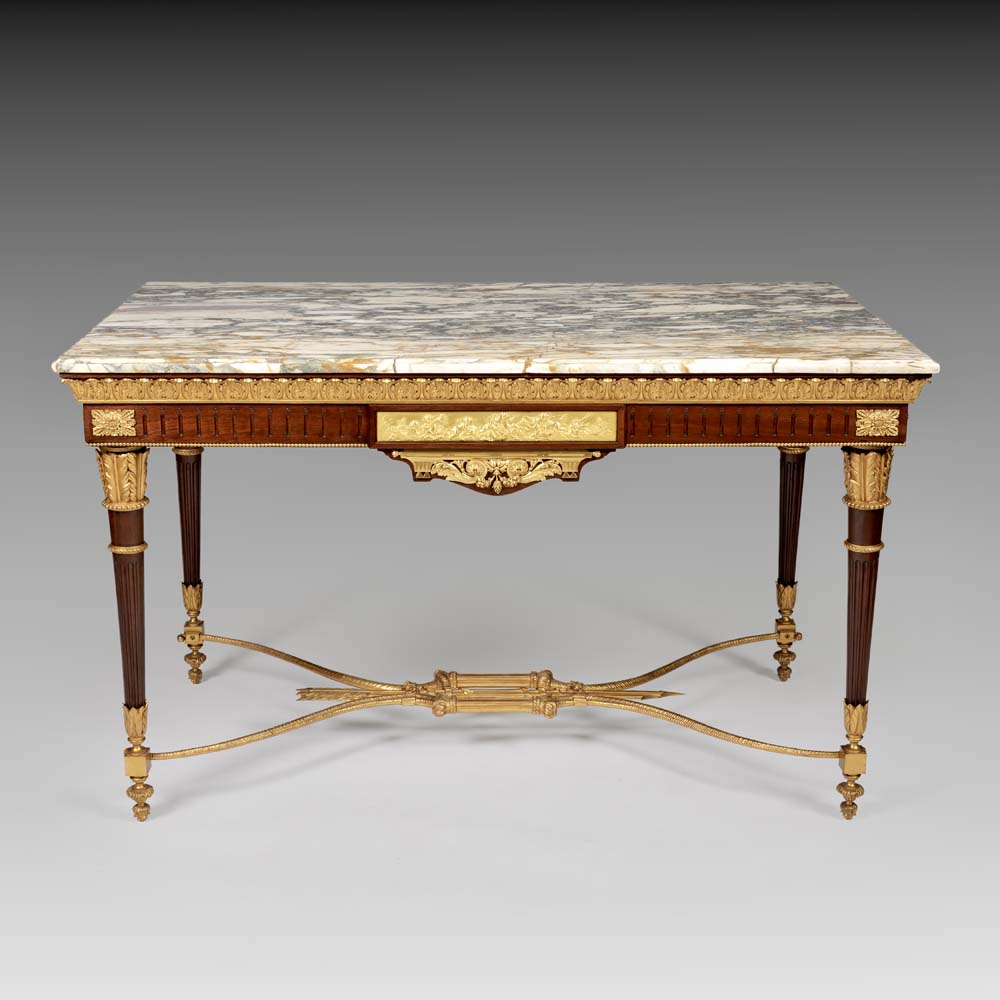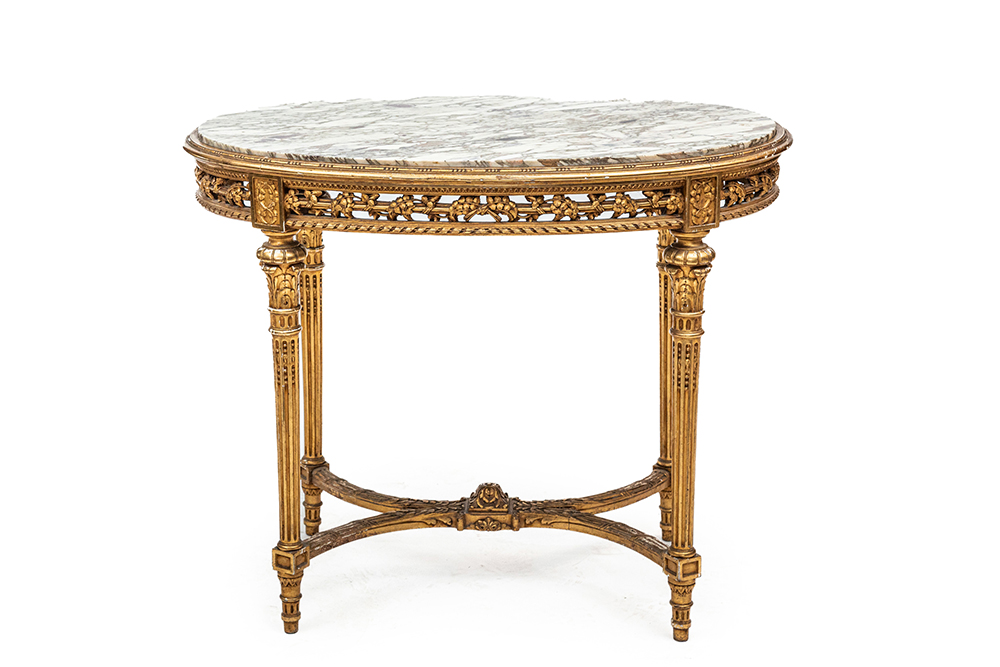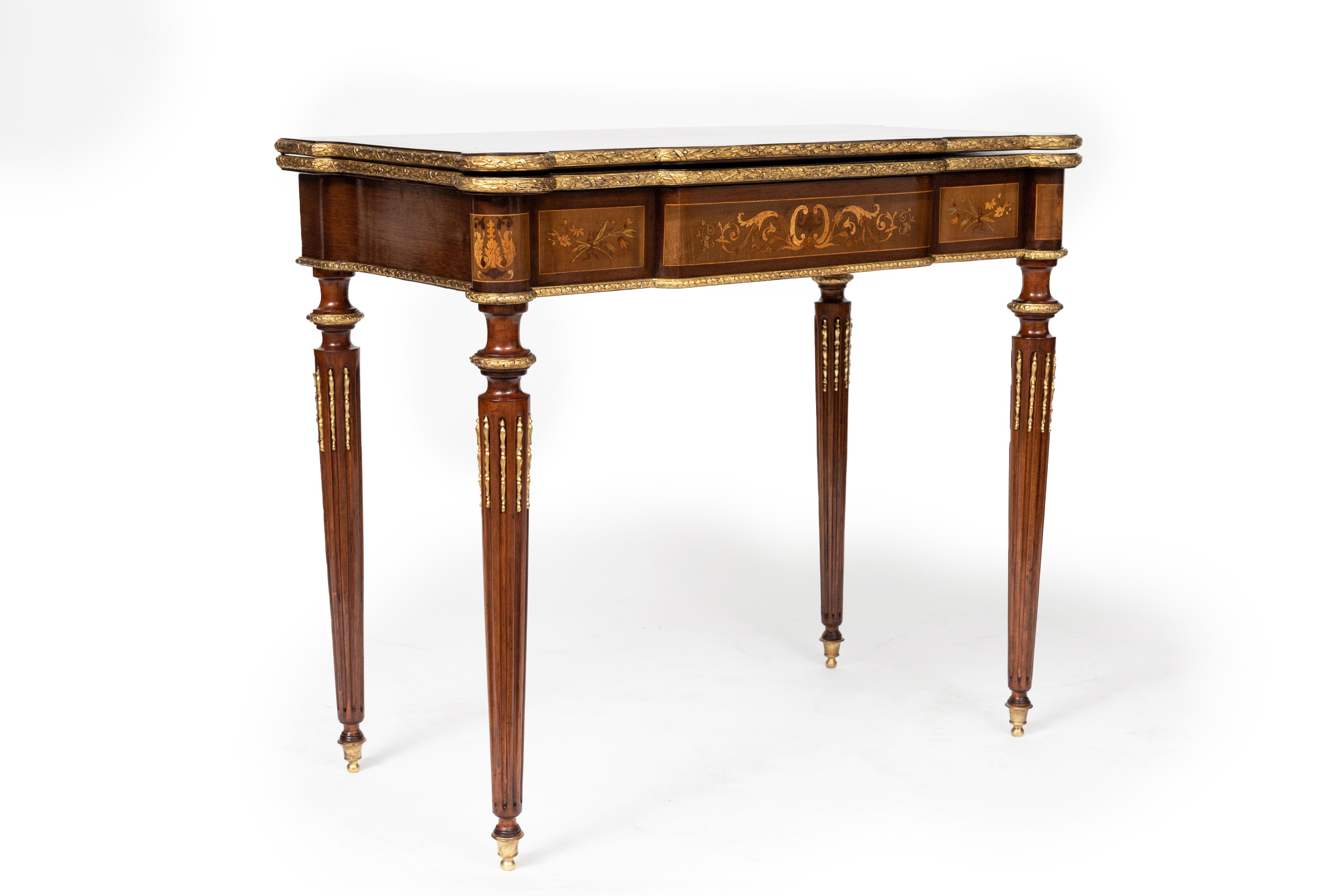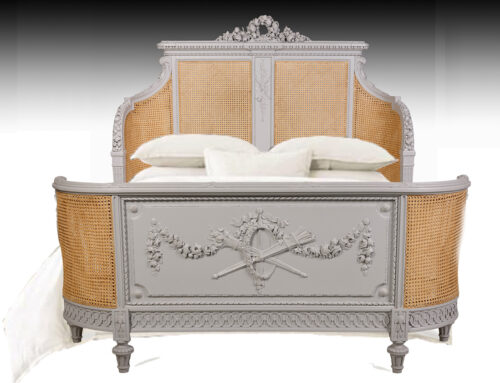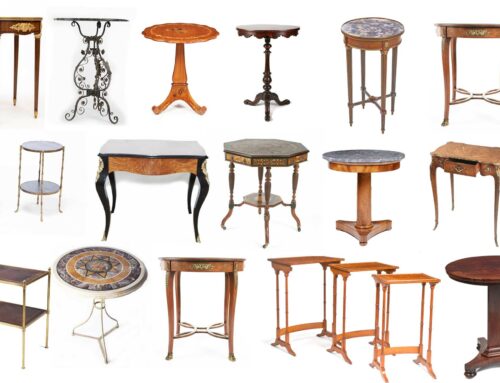Louis XVI Furniture: A Reflection of Enlightenment Ideals
For those that have a penchant for symmetry and order, look no furniture than Louis XVI furniture design for influence.
The reign of Louis XVI was not only notable for its political turbulence, but is also important for its outstanding architectural and interiors, both of which still heavily influence interiors and furniture design today. Emerging in the latter half of the century, the Louis XVI style marked a distinct departure from the more elaborate and curvaceous design style of the Rococo era and a shift to neoclassicism. With growing numbers of scholars visiting Italy and Greece, and inspired by excavations at Pompeii and Herculaneum, this new neoclassical aesthetic of symmetry, fine lines and romanticism reflected contemporary thought of order and harmony which permeated the arts and culture across Europe.
This shift from the ornate, asymetric Rococo style to the more restrained and classical design was a reflection of the new intellectual and moral aspirations that were emerging at the time. Furniture makers sought to convey these ideals through their work, emphasising proportion, order and harmony. The typical Louis XVI furniture style features straight lines, right angles and symmetry, largely inspired by ancient Greek and Roman art. Furniture pieces often rendered in materials like mahogany incorporated fluted legs, which mimic classical columns, and motifs such as laurel wreaths, rosettes, and urns. While design showed more restraint, the high level of luxury still prevailed, with furniture adorned with masterfully carved gilded bronze mounts and embellishments.

King Louis XVI and Marie Antoinette
Marie Antoinette and Louis XVI: Patrons of the Arts
Louis XVI inherited the French throne in 1774, aged only 19. His wife, the famed Marie Antoinette was extravagant – together they were passionate patrons of the arts, and their reign saw the flourishing of various art forms, including furniture design. Marie Antoinette, known for her refined taste and love for luxury, played a significant role in popularising the Louis XVI style. Her influence can be seen in the furniture that enhanced the royal residences, particularly the Petiti Trianon, her private retreat in Versailles. The pieces commissioned for this residence were marked by their delicacy, elegance, and the use of fine materials, all hallmarks of the Louis XVI style.
Louis XVI, though more reserved than his wife, shared her appreciation for the arts. He was deeply interested in the technical aspects of furniture making and his preference for simplicity and order is evident in the furniture of the period, which moved away from Rococo towards the more restrained, and classical aesthetic.
Louis XVI Furniture Examples from our Collection
The craftsmanship and design of Louis XVI furniture has appealed for centuries – it is enduring. Simply click any of the images below to view some wonderful examples from the Wallrocks collection:
One of the most significant and beautiful pieces in the Wallrocks collection, is this exceptional 19th century French Louis XVI centre table. This table typifies Louis XVI furniture design, with its stunningly beautiful marble top, fluted mahogany frieze with gilded bronze acanthus leaf mount, symmetrical tapering fluted legs, the tops of which represent the hallmark Louis XVI motif of a quiver of arrows, joined by a solid gilded bronze stretcher base in the form of a bow.
The detail of the table in the images below of this same table are equally exceptional quality and also typify this era of design. Known as the Romantic Era, the solid bronze gilded plaques feature winged putti, flowers, laurel wreaths and musical instruments.
The stretcher below in solid gilded bronze depicts a ribboned bow.
Pair 19th century French Louis XVI wing chairs.
A 19th century parcel gilt French Louis XVI settee.
Fine 19th century French Louis XVI card table.
Jean-Henri Riesener: Master Cabinetmaker to the King
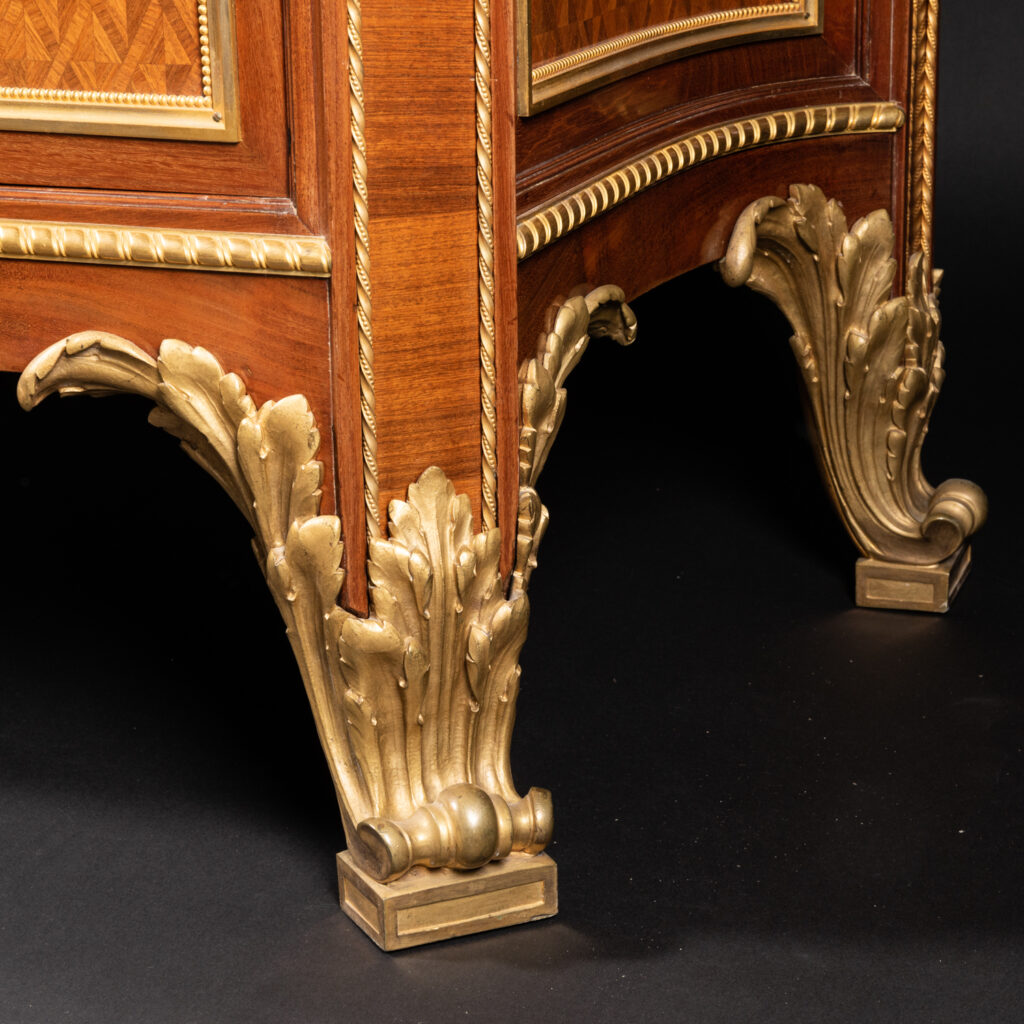 One of the most renowned cabinetmakers of the Louis XVI era was German born Jean-Henri Riesener. Appointed as the royal cabinetmaker to King Louis XVI (1774-1785), Riesener’s work is celebrated for its exquisite craftsmanship and luxurious materials. His furniture pieces were adorned with lavish gilt-bronze mounts, showcasing stunning detail and precision. Riesener was a master of marquetry, often incorporating intricate floral and arabesque patterns into his designs. His pieces were not only functional but also served as works of art, reflecting the refined tastes of the French court.
One of the most renowned cabinetmakers of the Louis XVI era was German born Jean-Henri Riesener. Appointed as the royal cabinetmaker to King Louis XVI (1774-1785), Riesener’s work is celebrated for its exquisite craftsmanship and luxurious materials. His furniture pieces were adorned with lavish gilt-bronze mounts, showcasing stunning detail and precision. Riesener was a master of marquetry, often incorporating intricate floral and arabesque patterns into his designs. His pieces were not only functional but also served as works of art, reflecting the refined tastes of the French court.
A notable example of furniture made in the style of Riesener is the French parquetry side cabinet stamped Bettenfeld, which we have available in our collection. This cabinet is a testament to the enduring influence of Riesener’s work, featuring the same attention to detail and craftsmanship that defined his pieces. The cabinet’s parquetry, combined with the gilt bronze mounts, embodies the elegance and refinement of the Louis XVI period.
Porcelain-Mounted Louis XVI Furniture: A Fashionable Trend in 1770’s Paris
Another distinctive characteristic of Louis XVI furniture was the use of porcelain-mounted elements. This trend became highly fashionable in Paris during the 1770’s, as the demand for luxury and refinement continued to grow among the French artistocracy. Porcelain plaques, often produced by the famous Sèvres factory, were incorporated into furniture designs, adding a touch of lightness and sophistication to pieces, a lovely example from our collection is this cabinet.
The Louis XVI Furniture Legacy
The legacy of Louis XVI style endures as a symbol of elegancy and refinement, influencing furniture design well beyond its 18th century beginnings. The emphasis on classical forms and symmetry inspired neoclassical movements movements across Europe and became a blue print for subsequent styles including Empire and Regency and remains a widely emulated furniture style to this day.


